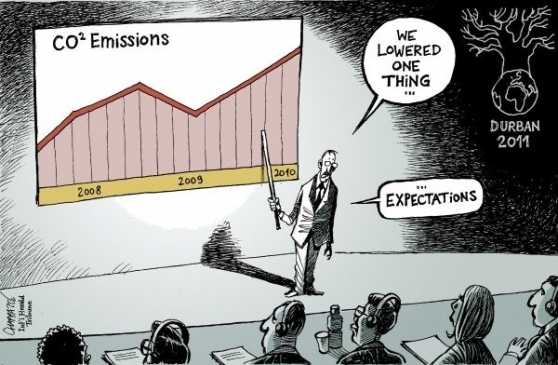Climate Change is the Visible Problem – Regenerative Sustainability is the Invisible Solution
 February 18, 2021 at 06:34AM
February 18, 2021 at 06:34AM A recent article in the New York Times, "U.S. Cities Are Vastly Undercounting Emissions," Researchers(John Schwartz, 2/2/2021), reports on a new study showing that "Inconsistent and flawed data is undercutting efforts to reduce greenhouse gas emissions from American cities." It asserts that more accurate measurement of city emissions is necessary for effective action as the US rejoins the Paris Agreement and the larger effort to reverse global climate change, but is it?
Although the point is a valid one, it is not the crux of the issue nor the whole solution. For instance, we can quickly reduce our GHG emissions to zero in one day if we simply turn off the economy, but that would jeopardize our survival. Yet, continuing to operate our current economy will also undermine our survival.
We must fully understand this point because time is of the essence. The IPCC reported last year that we have about 10 years remaining to produce the needed substantial reduction in annual GHG emissions to be on the reduction path to contain global warming to 1-1.5 degrees the limit for a habitable future.
The NYT article focuses on cities as major GHG producers. We can measure those emissions in different ways, improve measurement accuracy, or argue that cities are a source of the solution because their GHG emissions are lower per capita. However, those facts miss the key point. All emissions arise from our economy. The city-region is simply a location for most of them. In addition, eliminating emissions is only the visible challenge. Sustainability is the fundamental and necessary challenge and real climate solution. We can no longer continue using one-way material flows, accumulating pollution, and destroying natural capital without compromising the life support capacity of nature and the human economy.
Simply focusing on GHG emissions reduction will not be a quick enough transition. In addition, it will not protect our society and economy sufficiently in the face of the increasingly destructive environmental conditions of climate change. These conditions are in motion already from past emissions. The slowly responding climate system will take from 100 to 300 years to re-calibrate to more benign conditions if mitigation is successful.
Thus, we must do two things simultaneously for a real climate solution eliminate emissions and create an economy that does not produce GHGs and has the productive capacity to meet future needs. That economy must be substantially more productive. It must support ALL 9B of us by 2050 and up to 12B by 2100 at a standard of inclusive prosperity, in livable regions, with only positive environmental impacts. Transitioning to that 100% renewable energy ecological economy is the full sustainability solution and challenge.
As difficult as the climate challenge appears, we can respond successfully. Fusing land use planning and regenerative sustainability to the economy via the urban-regional spatial economy is the conceptualization for success. The local-state-national infrastructure of policy making, decisions, and action already exists, and can be improved. Thinking more expansively, this twin approach to the immediate and visible climate crisis could also inform a powerful new regenerative sustainability theme of 21st century foreign policy and global development. Of particular importance, such a reframing of the climate problem and solution would solve the current north/south conflict over climate solutions and the associated impasse in climate negotiations. It would set us on a path to solve the climate crisis while simultaneously creating the inclusive prosperity for which the world has hoped, and which is the only basis for a thriving future. Forging this path to regenerative sustainability success is our 21st century challenge (scientific, policy, implementation, and leadership). Picking up this larger challenge today will produce the success we seek tomorrow.
Scott Edmondson, AICP, ISSP-SA, is a planner-economist working on the long-range policy and planning challenges of urban and regional development and regenerative sustainability.
 Sustainability 2030 |
Sustainability 2030 |  Post a Comment |
Post a Comment | 



Reader Comments